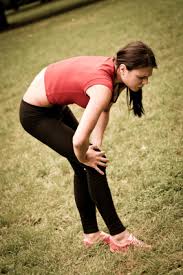We are often encouraged to get active and play a sport early in life. Kids are taught early in their life various different sporting activities that are not only fun, but teach discipline and tolerance as they get older. While sporting activities keep you active and often encourages good health and an ideal lifestyle, sporting injuries are unavoidable and most sport players will experience a series of injuries throughout their professional or non-professional career. Whether you play a sport for fun and enjoyment or as a professional career, once you have experienced a serious sporting injury that causes pain, you must seek treatment immediately.
 While most sporting accidents can easily be treated with the use of painkillers, more severe injuries will require more invasive treatments that may include constant pain management techniques.
While most sporting accidents can easily be treated with the use of painkillers, more severe injuries will require more invasive treatments that may include constant pain management techniques.
Sporting injuries, like the industry, comes in various different forms and affect different areas of the body. If you are an avid sports player, knowing some of the possible injuries that may occur can keep you on the ball and ready for almost anything in the event of an accident. To learn of some possible sporting injuries that you may experience during the life of your career, continue reading and get informed.
Common types of sporting injuries
Strains – strains are injuries that may affect your tendons (tissues connecting your muscles to your bones) and or muscles. There are various degrees to strains, which are more commonly referred to as muscle pulls.
Tendinitis – can affect any player, especially if they are known to apply poor mechanics. This injury is the inflammation of tendons.
Sprains – are possibly the most common sporting injuries and a sprain is an injury to ligaments.
Fasciitis – is the inflammation of the fibrous tissues covering tendons and muscles. The most common type of fasciitis is what is known as plantar fasciitis, which can affect regular people who walks or jogs a lot.
If you experience any of the mentioned sports injuries or some of the more severe injuries, applying simple home treatments may alleviate the pain. The acronym PRICE best explains the process of taking care of pain in the home.
 Protection – protect your injuries immediately by applying bandages and other protective materials.
Protection – protect your injuries immediately by applying bandages and other protective materials.
Rest – give your injury time to heal by allowing it to rest.
Ice – is one of the cheapest and most effective ways to treat a sporting injury.
Compression – applying pressure will cause an inflammation and swelling to decrease.
Elevation – by elevating your feet, fluid will be drained from the injured area.
While PRICE will help to heal early and minor injuries, this method will not work with all injuries and you may need medication or even rehabilitation to treat your pain caused by sporting injuries. Medications with the ingredient Acetaminophen are perfect for pain; however, this may not be enough and you may need time to rehabilitate.
Rehabilitation is not as drastic as it sounds and there are various rehabilitation centers that offer effective care to sport players who need their services. So, if you have a severe injury that needs treatment, do not hesitate to seek help.